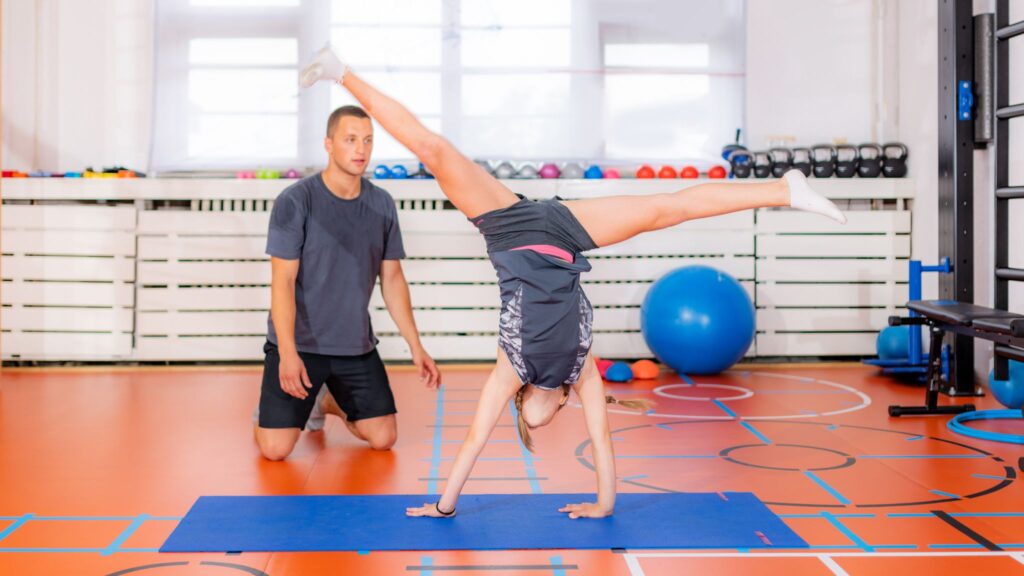Being a coach goes beyond crafting winning strategies or running drill after drill. While your technical expertise and ability to push athletes to peak performance are crucial, there’s another dimension that sets great coaches apart: leadership. True leadership inspires trust, fosters unity, and empowers athletes to reach their full potential—both on and off the field. Below are key steps to help you evolve from simply coaching a sport to leading a team.

1. Define Your Vision and Values
A strong leader knows where they want to go and why it matters. Begin by identifying:
- Your Coaching Philosophy
What do you stand for? Is it discipline, resilience, teamwork, or all of the above? - Long-Term Objectives
Outline measurable goals—like boosting team morale, improving win-loss records, or increasing player development metrics.
When you share a clear vision with your athletes, they understand the broader purpose behind each practice and game. This unified direction keeps everyone moving forward together.
2. Cultivate Open and Effective Communication
- Active Listening: Coaches often fall into the habit of giving directions without truly hearing athletes’ perspectives. Flip the script by encouraging questions and feedback. When players feel heard, they’re more willing to buy into your program.
- Clarity in Instructions: Avoid jargon or overly complex drills. Communicate the what, why, and how of each exercise or game plan. Straightforward instructions reduce confusion and boost execution.
- Constructive Feedback: Aim for a balanced approach: highlight strengths while offering specific areas for improvement. This combination builds confidence and ensures athletes know exactly how to grow.
3. Lead by Example
Athletes look to coaches for cues on behavior, work ethic, and attitude. If you want players to respect each other, show respect in every interaction. If you expect them to be punctual, be early yourself. Modeling desired behaviors consistently and authentically goes a long way in establishing credibility.
4. Develop Emotional Intelligence
Great leaders are in tune with their own emotions and those of their team. Emotional intelligence (EQ) involves:
- Self-Awareness
Recognize your own triggers and stressors. If you’re aware of your emotional state, you can respond more calmly under pressure. - Empathy
Understand your athletes’ challenges, fears, and aspirations. This helps in building stronger connections and trust. - Adaptability
Be flexible in your approach; what motivates one player might overwhelm another. Tailoring your leadership style to individual needs can elevate the entire team’s performance.
5. Encourage Growth and Accountability
A leader not only manages but also mentors. Foster a growth mindset by:
- Setting Personal Challenges
Assign specific goals for each athlete—like improving free-throw percentages or enhancing endurance. When players see progress, they stay motivated. - Celebrating Milestones
Recognize accomplishments, no matter how small. This positive reinforcement boosts confidence. - Promoting Ownership
Empower players to track their own progress and reflect on their performances. Encourage them to take responsibility for both successes and setbacks.
6. Nurture a Supportive Team Culture
A team is more than a group of individuals wearing the same uniform. It’s a community. Strengthen this community by:
- Hosting Team-Building Activities
From group hikes to trust-building exercises, shared experiences off the field translate into better chemistry on the field. - Fostering Mutual Respect
Celebrate diversity in skill levels, backgrounds, and personalities. When everyone feels valued, collaboration and morale flourish. - Offering Leadership Opportunities
Rotate captain roles or let different players lead certain drills. Developing leadership within your team creates a stronger, more cohesive unit.
7. Reflect and Adapt
The best leaders never stop learning. Regularly evaluate:
- Your Approach: Are your methods effective? Is your communication still resonating, or do you need a fresh angle?
- Team Feedback: Conduct end-of-season reviews or quick post-practice debriefs. Listening to athlete perspectives can reveal valuable insights.
- Professional Growth: Attend coaching clinics, read leadership books, and network with other mentors. Ongoing education fuels continuous improvement.
Transitioning from a coach who just runs drills to a leader who inspires growth involves a conscious shift in mindset and strategy. By defining a clear vision, communicating effectively, modeling the behaviors you value, and fostering a culture of accountability and support, you’ll set a powerful example for your team.
Strong leadership skills don’t just help you rack up wins—they also shape athletes who are resilient, disciplined, and ready to excel in life. Embrace this expanded role, and watch your influence extend far beyond the playing field.
